43 have author last names that start with K have author last names that start with K
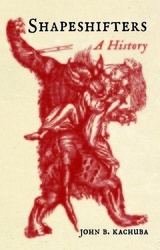
The myths, magic, and meaning surrounding shapeshifters are brought vividly to life in John B. Kachuba’s compelling and original cultural history. Rituals in early cultures worldwide seemingly allowed shamans, sorcerers, witches, and wizards to transform at will into animals and back again. Today, there are millions of people who believe that shapeshifters walk among us and may even be world leaders. Featuring a fantastic and ghoulish array of examples from history, literature, film, TV, and computer games, Shapeshifters explores our secret desire to become something other than human.

Kale follows Hemingway around the world and through his many roles—as a young Red Cross volunteer in World War I, as an expatriate poet in 1920s Paris, as a career novelist navigating the burgeoning middlebrow fiction market, and as a seasoned but struggling writer still trying to draft his masterpiece. She takes readers through his four marriages, his joyous big game expeditions in Africa, and his struggles with celebrity and craft, especially his decades-long attempt at a novel that was supposed to blow open the boundaries of American fiction and upset the very conventions he helped to create. It is this final aspect of Hemingway’s life—Kale shows—that wreaked the greatest havoc on him, taking a steep physical and mental toll that was likely exacerbated by a medical condition that science is only beginning to understand.
Concise but insightful, this book offers an acute portrait of one of the most important figures of American arts and letters.


This book takes us on a sweeping journey through the ebbs and flows of Pakistan’s history, from the ancient Indus Valley Civilization to contemporary times. Chequered Past, Uncertain Future uncovers influences from Turkey, Persia, Arabia, and Britain that have shaped Pakistan, as well as showcases the region’s diverse and rich tapestry of peoples, and its pluralistic, multicultural society. The book also describes the post-1947 shift—following the partition of India and the establishment of the Islamic Republic of Pakistan—as the country became more religiously conservative and autocratic, intensifying sectarian and ethnic divisions. For most of their history, the people of Pakistan have found themselves under the control of military dictators who suppress civil liberties and freedom of speech and action—a trend that persists today.

Ludwig Wittgenstein is generally considered as the greatest philosopher since Immanuel Kant, and his personal life, work, and his historical moment intertwined in a fascinating, complex web. Noted scholar Edward Kanterian explores these intersections in Ludwig Wittgenstein, the newest title in the acclaimed Critical Lives series.
Wittgenstein’s works—from Tractatus Logico-Philosophicus to the posthumously published Philosophical Investigations—are notoriously dense, and Kanterian carefully distills them here, proposing thought-provoking new interpretations. Yet the philosopher’s passions were not solely confined to theoretical musings, and the book explores Wittgenstein’s immersion in art and music and his social position as a member of the sophisticated Viennese upper class at the turn of the century. His personal and professional relationships also offer insights into his thoughts, as he was friends with the greatest thinkers of the twentieth century, including John Maynard Keynes, George Edward Moore, Bertrand Russell, and Gilbert Royle. The philosopher was also deeply tormented by ethical and religious questions, and his internal turmoil, Kanterian argues, gives us a deeper understanding of the important conflicts and tensions of his age. Ultimately, the author contends, Wittgenstein’s life reveals insights into the ethical quandaries of our own time.
A readable and concise account, Ludwig Wittgenstein is an informative, accessible introduction to the one of the greatest thinkers of our age.
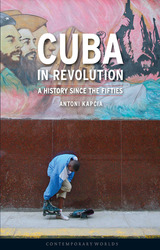
Cuba In Revolution takes the Cuban Revolution as its starting point, analyzing social change, its benefits and disadvantages, popular participation in the revolution, and the development of its ideology. Kapcia probes into Castro’s rapid rise to national leader, exploring his politics of defense and dissent as well as his contentious relationship with the United States from the beginning of his reign. The book also considers the evolution of the revolution’s international profile and Cuba’s foreign relations over the years, investigating issues and events such as the Bay of Pigs crisis, Cuban relations with Communist nations like Russia and China, and the flight of asylum-seeking Cubans to Florida over the decades. The collapse of the Soviet Union between 1989 and 1991 catalyzed a severe economic and political crisis in Cuba, but Cuba was surprisingly resilient in the face of the catastrophe, Kapcia notes, and he examines the strategies adopted by Cuba over the last two decades in order to survive America’s longstanding trade embargo.
A fascinating and much-needed examination of a country that has served as an important political symbol and diplomatic enigma for the twentieth century, Cuba In Revolution is a critical primer for all those interested in Cuba’s past—or concerned with its future.

In Comets, P. Andrew Karam takes the reader on a far-ranging exploration of these most beautiful and dramatic objects in the skies, revealing how comets and humanity have been interwoven throughout history. He delves into the science of comets and how it has changed over time; the way comets have been depicted in art, religion, literature, and popular culture; and how comets have appeared in the heavens through the centuries. Comprehensive in scope and beautifully illustrated throughout, the book will appeal not only to the budding astronomer, but to anyone with an appreciation for these compelling and remarkable celestial bodies.

Hilda Kean looks at the cultural and social role of animals from 1800 to the present – at the way in which visual images and myths captured the popular imagination and encouraged sympathy for animals and outrage at their exploitation. From early campaigns against the beating of cattle and ill-treatment of horses to concern for dogs in war and cats in laboratories, she explores the relationship between popular images and public debate and action. She also illustrates how interest in animal rights and welfare was closely aligned with campaigns for political and social reform by feminists, radicals and socialists.
"A thoughtful, effective and well-written book"—The Scotsman
"It could hardly be more timely, and its wonderful material is bound to provoke ... reflection"—The Independent
"A work of great interest"—Sunday Telegraph
"Lively, impressively researched, and well-written ... a book that is timely and valuable"—Times Literary Supplement
"A pleasing balance of anecdote and analysis"—Times Higher Educational Supplement

Jon Kear begins with Cézanne’s formative years in Provence, highlighting the deep and abiding impressions the landscapes of the region would have on his paintings. He follows him through his turbulent years as a young artist in Paris, where he would create the larger-than-life artistic persona—through a rugged painting style detailing explicit subjects—that would become a lasting mythology for him throughout all of his phases. He looks closely at Cézanne’s relationships with Edouard Manet—whom he both emulated and critiqued—and the writer Émile Zola, as well as his close collaboration with Camille Pissarro. Above all, he tells the story of his life as a part of the pivotal shift toward the twentieth century, illuminating how much his work and ideas helped to usher it in.
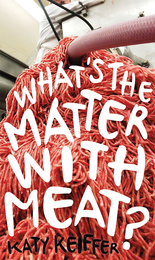
What’s the Matter with Meat? explores everything from labor issues to genetic manipulation to animal welfare to environmental degradation, illustrating just how the industrial model for meat production conjures up huge quantities of cheap meat even as it shifts many of the real costs onto the taxpayer. She describes practices few of us know about, such as land grabs in which predator companies acquire property in foreign countries for meat production, often driving out local farmers. She shows how industry consolidation entrenches cost-effective but harmful practices, creating monopolies that force competitors out of business, drive down labor costs, erode workers’ rights, and exert extraordinary power over nearby communities.
Keiffer demonstrates with irrefutable force that the current model for meat production—adopted worldwide—is simply not sustainable and will soon exhaust the planet’s resources. A hard-hitting critique of the meat industry and its harmful effects, this book shows us just how important it is to care about where our food comes from, to support alternative production systems, and to stop those practices that are ruining our planet in the service of the burger and the nugget.
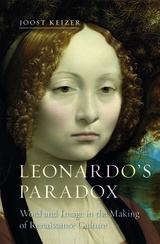
In this book, Joost Keizer argues that the comparison between word and image fueled Leonardo’s thought. The paradoxes at the heart of Leonardo’s ideas and practice also defined some of Renaissance culture’s central assumptions about culture and nature: that there is a look to script, that painting offered a path out of culture and back to nature, that the meaning of images emerged in comparison with words, and that the difference between image-making and writing also amounted to a difference in the experience of time.
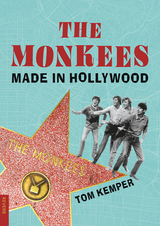
The behind-the-scenes story of the controversial 1960s made-for-tv rock band.
The Monkees represent a vital problem for rock and pop: is it the music that matters or the personality and image of the performers? This book explores the system behind the Monkees, the controversial made-for-TV band that scored some of the biggest hits in the 1960s. The Monkees represent the cumulative result of a complex coordination of talented individuals, from songwriters to studio musicians to producers—in short, the 1960s Hollywood music industry. At the time, the new rock criticism bewailed the “fake” band while fans and audiences pushed the Monkees to the top of the charts. Through the Monkees’ unlikely success, this book illustrates the commercial genius of the Hollywood system and its legacy in popular music today.

Georges Bataille was arguably the greatest influence on the poststructuralist revolution in twentieth-century thought and literature, yet few truly understand his work and legacy. Stuart Kendall now translates the work and life of this renowned French writer, anthropologist, and philosopher into a concise yet informative biography that reveals fascinating facets of this intellectual giant.
Until his death in 1962, Bataille was an instrumental force in philosophical debate, acting as a foil for both Surrealism and Existentialism and advocating radical views that spanned the entire spectrum of political thought. Georges Bataille chronicles these aspects of his intellectual development, as well as tracing out his pivotal role in the creation of the College of Sociology and how his writings in aesthetics and art history laid the groundwork for visual culture studies. Kendall positions Bataille at the heart of a prodigous community of thinkers, including André Breton, Jean-Paul Sartre, and Jacques Lacan.
A compelling account, Georges Bataille will be invaluable for all thinkers who have benefited from Bataille’s lasting contributions.
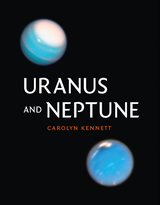
The most distant planets in our solar system, Uranus and Neptune were unknown by the ancients—Uranus was discovered in the 1780s and Neptune only in the 1840s. Our discovery and observation of both planets have been hampered by their sheer distance from Earth: there has only been one close encounter, Voyager 2 in the late 1980s. The Voyager mission revealed many enticing details about the planets and their moons but also left many more questions unanswered. This book is an informative and accessible introduction to Uranus, Neptune, and their moons. It takes readers on a journey from discovery to the most recent observations made from space- and ground-based telescopes, and it will appeal to amateur and professional astronomers alike.

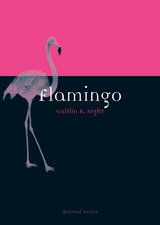
Kight presents the flamingo in a concise and accessible way, introducing its detailed scientific history alongside what we know about its often hostile habitats and complex social behavior. She explores its genetic lineage and the confusions it has caused, and she details the significance it has had for many cultures, whether as a spiritual totem or a commercial symbol of the tropical life. She even explains how it gets its extraordinary color (hint: it has to do with its diet). A wonderful resource for any bird lover, Flamingo provides valuable insight into just what makes this flashy-feathered character so special.

This book showcases a collection of the most visually captivating, intriguing, and often overlooked examples of Korean art. Mina Kim highlights the artistic output of the 1960s and ’70s through today, providing crucial aesthetic and political context for understanding the work. Key ideas that structure the book include performance, gender, identity, internationalism, and the evolution of multimedia. By placing artistic expression at the core of Korean culture and society, this book sheds new light on the role of Korea’s contributions to global visual culture.
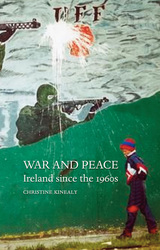
In War and Peace:Ireland Since 1960, Christine Kinealy explores the political triumphs and travails in Ireland over the last five decades. War and Peace provides a thorough and up-to-date account of the unfolding of “The Troubles,” the three decades of violence and social unrest between the Catholic nationalists and the Protestant unionists. In addition, Kinealy examines the Republic of Ireland’s entry into the European Union in 1973, its often contentious relationship with England, and the changes in emigration during the period. Of additional interest to Kinealy is the effect of the women’s movement, which has given rise to the election of two female presidents, proving Ireland’s ability to accept and internalize change.
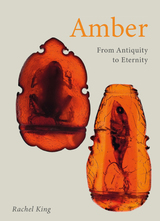
Amber: From Antiquity to Eternity is a history of human engagement with amber across three millennia. The book vividly describes our conceptions, stories, and political and scholarly disputes about amber, as well as issues of national and personal identity, religion, art, literature, music, and science. Rachel King rewrites amber’s history for the twenty-first century, tackling thorny ethical and moral questions regarding humanity’s relationship with amber in the past, as well our connection with it today. With the Earth facing unprecedented challenges, amber—the natural time capsule, and preserver of key information about the planet’s evolutional history—promises to offer invaluable insights into what comes next.
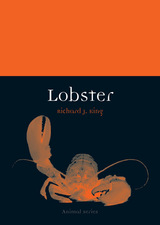
Other than that it tastes delicious with butter, what do you know about the knobbily-armoured, scarlet creature staring back at you from your fancy dinner plate? From ocean to stock pot, there are two sides to every animal story. For instance, since there are species of lobsters without claws, how exactly do you define a lobster? And how did a pauper’s food transform into a meal synonymous with a luxurious splurge? To answer these questions on behalf of lobster the animal is Richard J. King, a former fishmonger and commercial lobsterman, who has chronicled the creature’s long natural history.
Part of the Animal series, King’s Lobster takes us on a journey through the history, biology, and culture of lobsters, including the creature’s economic and environmental status worldwide. He describes the evolution of technologies to capture these creatures and addresses the ethics of boiling them alive. Along the way, King also explores the salacious lobster palaces of the 1920s, the animal’s thousand-year status as an aphrodisiac, and how the lobster has inspired numerous artists, writers, and thinkers including Aristotle, Dickens, Thoreau, Dalí, and Woody Allen.
Whether you want to liberate lobsters from their supermarket tanks or crack open their claws, this book is an essential read, describing the human connection to the lobster from his ocean home to the dinner table.

At the age of seventeen, Marco Polo left his Venetian home on a continent-spanning adventure that lasted for nearly a quarter century. Imprisoned in Genoa five years later, he collaborated with Arthurian romance writer Rustichello of Pisa on a work they called The Description of the World. That book recounted “all the greatest marvels and great diversities of Greater Armenia, Persia, the Tartars, India, and many other provinces,” a story that made Polo famous for all time.
In Marco Polo and His World, Sharon Kinoshita brings these marvels to life, describing the myriad commodities, plants, people, and animals that Marco encountered and recorded. Copiously illustrated, this book offers a vibrant introduction to Marco Polo’s astounding adventures.
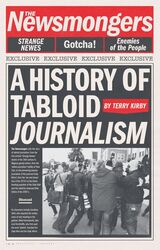
The Newsmongers unfolds the seedy history of tabloid journalism, from the first printed “Strange Newes” sheets of the sixteenth century to the sensationalism of today’s digital age. The narrative weaves from Regency gossip writers through New York’s “yellow journalism” battles to the “sex and sleaze” Sun of the 1970s; and from the Brexit-backing populism of the Daily Mail to the celebrity-obsessed Mail Online of the 2000s. Colorful figures such as Daniel Defoe, Lord Northcliffe, Hugh Cudlipp, Rupert Murdoch, and Robert Maxwell are brought to vivid life.
From scandalous confessions to the Leveson Inquiry into the behavior of the British press, the book explores journalists’ unscrupulous methods, taking in phone hacking, privacy breaches, and bribery. And now, in the digital era, The Newsmongers shows how popular journalism has succumbed to so-called churnalism while a certain royal is seeking revenge on the tabloids today.
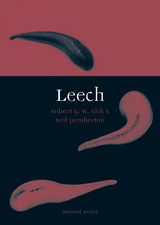

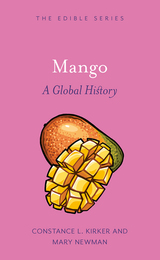
This beautifully illustrated book takes us on a tour through the rich world of mangoes, which inspire fervent devotion across the world. In South Asia, mangoes boast a history steeped in Hindu and Buddhist mythology, even earning a mention in the Kama Sutra. Beyond myth, the authors show us that mangoes hold literary significance as a potent metaphor. While mango-flavored smoothies grace Western grocery shelves, the true essence of sweet, juicy mangoes or tangy, unripe varieties is a rarity: supermarket offerings often prioritize shelf-life over taste.
This book offers an accessible introduction to the world of true mango aficionados and the thousand varieties they cherish.
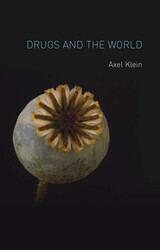
To be properly understood, drugs should not be simply examined from a negative point of view, Klein argues. From their centrality in religious rituals to their part in the growth of trade among nation-states, Klein reveals the pivotal role that drugs have played in the advancement of human society. Klein then investigates the modern policies that define certain substances as drugs; the link between drugs, addiction, and crime; and the legal strategies and policies around the world that have largely failed to control global drug trafficking. The book also draws upon studies from the Caribbean, West Africa and Eastern Europe to propose solutions that could reinforce the eroded power of state institutions, law enforcement, and the democratic process in addressing drug trafficking.
A timely and in-depth analysis, Drugs and the World offers an expertly written examination that will be essential for all those concerned with the role of drugs in the modern world.
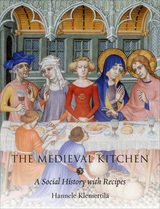
We don’t usually think of haute cuisine when we think of the Middle Ages. But while the poor did eat a lot of vegetables, porridge, and bread, the medieval palate was far more diverse than commonly assumed. Meat, including beef, mutton, deer, and rabbit, turned on spits over crackling fires, and the rich showed off their prosperity by serving peacock and wild boar at banquets. Fish was consumed in abundance, especially during religious periods such as Lent, and the air was redolent with exotic spices like cinnamon and pepper that came all the way from the Far East.
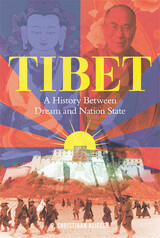
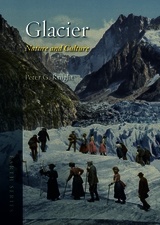
An inspiration to artists and a challenge for engineers, glaciers mean different things to different people. Crossing the boundaries between art, environment, science, nature, and culture, this book considers glaciers from myriad perspectives, revealing their complexity, majesty, and importance—but also their fragility.

Three rulers from the House of Orange-Nassau reigned over the Netherlands from 1813 to 1890: King William I from 1813 to 1840, King William II from 1840 to 1849, and King William III from 1849 to 1890. Theirs is an epic tale of joy and tragedy, progress and catastrophe, disappointment and glory—all set against the backdrop of a Europe plagued by war and revolution.
The House of Orange in Revolution and War relates one and a half centuries of House of Orange history in a gripping narrative, leading the reader from the last stadholders of the Dutch Republic to the modern monarchy of the early twentieth century, from the French Revolution and the Napoleonic wars to World War I and the European Revolutions that came after it.
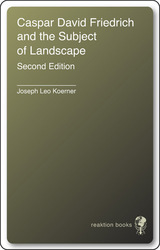
Caspar David Friedrich (1774–1840) is heralded as the greatest painter of the Romantic movement in Germany, and Europe’s first truly modern artist. His mysterious and melancholy landscapes, often peopled with lonely wanderers, are experiments in a radically subjective artistic perspective—one in which, as Freidrich wrote, the painter depicts not “what he sees before him, but what he sees within him.” This vulnerability of the individual when confronted with nature became one of the key tenets of the Romantic aesthetic.
Now available in a compact, accessible format, this beautifully illustrated book is the most comprehensive account ever published in English of one of the most fascinating and influential nineteenth-century painters.
“This is a model of interpretative art history, taking in a good deal of German Romantic philosophy, but founded always on the immediate experience of the picture. . . . It is rare to find a scholar so obviously in sympathy with his subject.”—Independent
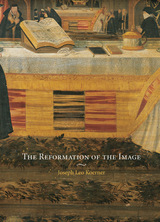
But if words—not iconic images—showed the way to salvation, why didn't religious imagery during the Reformation disappear along with indulgences? The answer, according to Joseph Leo Koerner, lies in the paradoxical nature of Protestant religious imagery itself, which is at once both iconic and iconoclastic. Koerner masterfully demonstrates this point not only with a multitude of Lutheran images, many never before published, but also with a close reading of a single pivotal work—Lucas Cranach the Elder's altarpiece for the City Church in Wittenberg (Luther's parish). As Koerner shows, Cranach, breaking all the conventions of traditional Catholic iconography, created an entirely new aesthetic for the new Protestant ethos.
In the Crucifixion scene of the altarpiece, for instance, Christ is alone and stripped of all his usual attendants—no Virgin Mary, no John the Baptist, no Mary Magdalene—with nothing separating him from Luther (preaching the Word) and his parishioners. And while the Holy Spirit is nowhere to be seen—representation of the divine being impossible—it is nonetheless dramatically present as the force animating Christ's drapery. According to Koerner, it is this "iconoclash" that animates the best Reformation art.
Insightful and breathtakingly original, The Reformation of the Image compellingly shows how visual art became indispensable to a religious movement built on words.
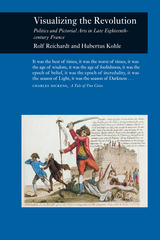
The French Revolution was marked by a wealth of imagery and visual symbolism that inspired the masses to fight for freedom. Visualizing the Revolution surveys the rich and multifaceted visual culture of the French Revolution, exploring its creation and how it conveyed the new revolutionary sensibilities of the era.
Unlike most studies on art of the French Revolution, Visualizing the Revolution embraces a wide range of artistic genres—including prints, architecture, painting, and sculpture—and also draws upon archival documents to investigate the period’s aesthetic concerns. The authors break new ground in methodology and interpretative practice as they tease out the web of connections between these various historical artifacts and argue for the central place of the arts in the transmission of ideas and the political manipulation of the populace. The book translates the provocatively new visual language revealed in these artworks and writings and shows how its emphasis on metaphor, allegory, and symbolism transformed French mass visual culture. An innovative and lushly illustrated study, Visualizing the Revolution is a worthy new contribution to scholarship on the French Revolution and the history of French art.
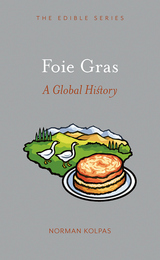
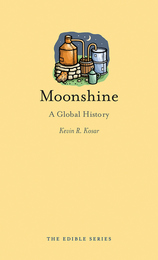
Kosar first surveys all the things we’ve made moonshine from, including grapes, grains, sugar, tree bark, horse milk, and much more. But despite the diversity of its possible ingredients, all moonshine has two characteristics: it is extremely alcoholic, and it is, in most places, illegal. Indeed, the history of DIY distilling is a history of criminality and the human ingenuity that has prevailed out of officials’ sights: from cleverly designed stills to the secret smuggling operations that got the goods to market. Kosar also highlights the dark side: completely unregulated, many moonshines are downright toxic and dangerous to drink. Spanning the centuries and the globe, this entertaining book will appeal to any food and drink lover who enjoys a little mischief.

A Manhattan or a Sazerac; neat, on the rocks, or with a splash of soda—no matter how it’s served up, whiskey is synonymous with the poet’s inspiration and the devil’s spirit. Be it bourbon, rye, corn, Irish, or Scotch, whiskey has an infamous and celebrated history from a sometimes lethal, herb-infused concoction to a high-quality, meticulously crafted liquor.
In Whiskey, Kevin R. Kosardelivers an informative, concise narrative of the drink’s history, from its obscure medieval origins to the globally traded product that it is today. Focusing on three nations—Scotland, Ireland, and America—Kosarcharts how the technique of distillation moved from ancient Egypt to the British Isles. Contrary to popular claims, there were no good old days of whiskey: before the twentieth century, consumers could never be sure just what was being poured in their cup—unscrupulous profiteers could distill anything into booze and pawn it off as whiskey. Eventually, government and industry established legal definitions of what whiskey is and how it could be made, allowing for the distinctive styles of whiskey known today.
Whiskey explains what whiskey is, how it is made, and how the types of whiskey differ. With a list of suggested brands and classic cocktail recipes for the thirsty reader, this book is perfect for drink and food enthusiasts and history lovers alike.
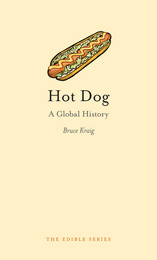
Kraig discusses the many brands, including Hebrew National, Pearl, Sabrett, and Vienna Beef, and the regional variations that go along with them—like kosher-style New York dogs loaded with mustard and sauerkraut, New England dogs with Boston Baked Beans, and fully-loaded Chicago style hotdogs, complete with mustard, onion, relish, sport peppers, a dill pickle spear, a dash of celery salt, and tomato slices (but never, ever ketchup). Hot Dog covers the other international sausages, like bologna and bockwurst, as well, and explores some of the apocryphal tales of the hotdog in history—like the origin of its name and whether Queen Elizabeth II was truly served hotdogs on a visit to the White House.
Packed with tasty facts and recipes, Hot Dog reveals the rich history and passionate opinions about this seemingly ordinary food.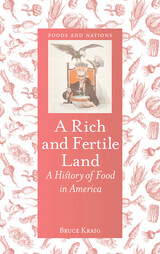
From the first Native Americans to modern industrial farmers, Kraig takes us on a journey to reveal how people have shaped the North American continent and its climate based on the foods they craved and the crops and animals that they raised. He analyzes the ideas that Americans have about themselves and the world around them, and how these ideas have been shaped by interactions with their environments. He details the impact of technical innovation and industrialization, which have in turn created modern American food systems.
Drawing upon recent evidence from the fields of science, archaeology, and technology, A Rich and Fertile Land is a unique and valuable history of the geography, climate, and food of the United States.
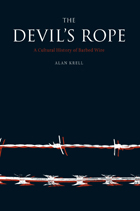
Invented in France in 1860, barbed wire was developed independently in the USA, where it was used to control livestock on the Great Plains, both to "keep out" and "keep in". Promoted as the Ideal Fence, barbed wire’s menacing qualities were soon made manifest. The epithet, "The Devil’s Rope", anticipated its transformation into a tool of war in the late 19th and early 20th century. Henceforth, it would become synonymous with repression. Barbed wire’s conflicting character makes it an appropriate symbol of modernity, and Krell shows how the use of this symbolism in contemporary art has given barbed wire meanings beyond the historical and political realms.
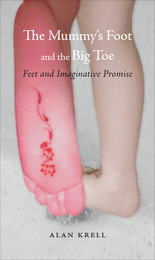
The Mummy’s Foot and the Big Toe explores the innumerable appearances of the foot in literature, photography, art, sports, and film. Walk with Krell as he discovers gothic tales by French writer Théophile Gautier, disturbing photographs by François Boiffard, and religious paintings by Giotto, Tintoretto, and Caravaggio that all exalt the foot. Marvel with him at the sporting exploits of elite barefoot runners such as Abebe Bikila and Zola Budd, and the surprising representation of the foot in films such as The Adventures of Huckleberry Finn and Kill Bill. Blending insights from the humanities, language studies, the social sciences, and anthropology, and presenting a wealth of tantalizing new images and ideas of the foot, The Mummy’s Foot and the Big Toe will help us all to be better acquainted with the soul and sole of our bottom-most appendage.
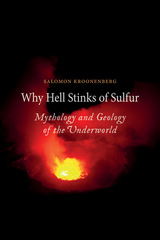
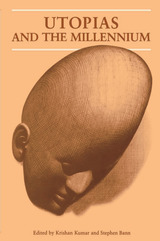
The essays in this book explore aspects of this relationship; some consider their role in the debate concerning human perfectibility, while others examine the rise of secularism. Further contributions reflect upon the apparent failure of the modern Communist utopia, note the recent reappearance of apocalyptic themes in fiction and social theory, or draw on the contributions of feminism and ecology. As our century ends, it seems that utopia and the millennium are once more locked in an uneasy embrace.
With essays by Louis Marin, J. C. Davis, Louis James, Gregory Claeys, Krishan Kumar, Vita Fortunati, David Ayers, Jan Relf and John O'Neill.

In 1543 the young and ambitious physician Andreas Vesalius published one of the most famous books in the history of medicine, On the Fabric of the Human Body. While we often think of dissection as destroying the body, Vesalius believed that it helped him understand how to construct the human body. In this book, Sachiko Kusukawa shows how Vesalius’s publication emerged from the interplay of Renaissance art, printing technology, and classical tradition. She challenges the conventional view of Vesalius as a proto-modern, anti-authoritarian father of anatomy through a more nuanced account of how Vesalius exploited cultural and technological developments to create a big and beautiful book that propelled him into imperial circles and secured his enduring fame.
READERS
Browse our collection.
PUBLISHERS
See BiblioVault's publisher services.
STUDENT SERVICES
Files for college accessibility offices.
UChicago Accessibility Resources
home | accessibility | search | about | contact us
BiblioVault ® 2001 - 2024
The University of Chicago Press









